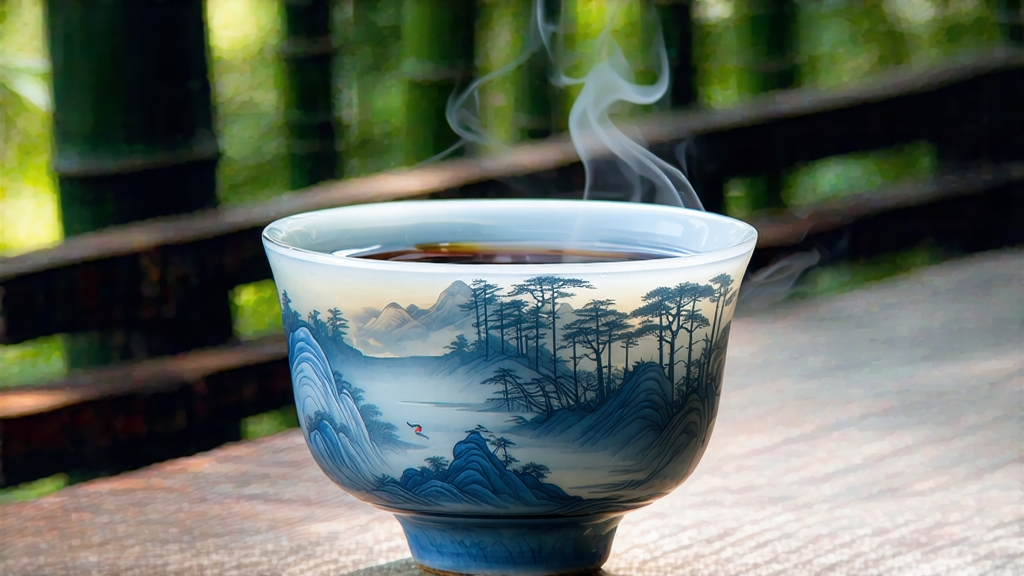
White tea is the quietest chapter in the long epic of Chinese tea, and within that chapter Silver Needle—Bai Hao Yin Zhen in Mandarin—occupies the opening line. To international drinkers accustomed to the roar of black tea or the green flash of sencha, Silver Needle can feel almost too subtle to be believed: a liquor the color of late-afternoon sunlight, a fragrance that suggests fresh hay, pear blossom, and the faint sweetness of rice pudding. Yet this apparent simplicity is the result of one of the most unforgiving crafts in all of tea production. One wrong hour of sunshine, one extra percentage point of moisture, and the entire lot collapses into flat grassiness or, worse, the sour tang of uncontrolled enzymatic activity. In the following pages we will walk the narrow ridge between preservation and loss that defines Silver Needle, from the Tang-dynasty court gardens where white buds were first steamed and powdered, to the modern glass gaiwans of Berlin and Brooklyn where the same buds now unfurl in 85 °C water.
History: From Imperial Tribute to Global Minimalism
The earliest written reference to “white tea” appears in the Treatise on Tea (茶录, 1049 CE) by Cai Xiang, a Song-dynasty scholar-official who praises its “jade-white down and cooling nature.” At that time the term described a compressed cake made from select buds of wild tea trees in northern Fujian; the cakes were steamed, pressed, and drilled with holes so they could be strung on silk ribbons and presented to the emperor. When the Hongwu Emperor abolished compressed tribute tea in 1391, demanding instead loose-leaf offerings, the buds were simply sun-dried, and the proto-Silver Needle was born. European records first mention it in 1696, when the East India Company shipped “Pekoe Souchong White Hyson”—a jumble of grades that nonetheless fetched ten times the price of black Bohea. By the late nineteenth century Fuding and Zhenghe counties had formalized the cultivars and withering courts still used today, and in 1891 Silver Needle won the highest award at the Melbourne International Exhibition, cementing its global reputation.
Terroir: Two Counties, Two Characters
Authentic Silver Needle is produced only in Fujian province, and only from two specific cultivars: Fuding Da Bai (Big White) and Zhenghe Da Bai. The Fuding version, grown at 200–600 m among granite outcrops and sea-mist drift, delivers a plumper bud with a silvery sheen so bright it once fooled customs officers into thinking the chests were filled with platinum pins. Zhenghe, higher and more continental, produces a slightly slimmer, more iron-gray bud whose liquor is deeper and whose fragrance carries hints of narcissus and wet slate. Purists will debate which county reigns supreme, but the wise drinker treats them as two faces of the same moon.
Harvest Calendar: The Forty-Eight Hours of Spring
Silver Needle is picked only during a narrow window in early to mid-March, when the buds have reached 2.5–3 cm but have not yet unfurled into the first leaf. Experienced pluckers use a diagonal snap that leaves the tiny “fish-tail” base intact; this prevents oxidation from the broken stem. A top-grade garden will yield just 500 g of finished tea per plucker per day, roughly 30,000 individual buds. The buds must reach the withering shed within two hours; any longer and the ambient enzymes begin to consume the very amino acids that create the tea’s signature sweetness.
Craft: The Art of Doing Almost Nothing
Unlike green tea, Silver Needle is never pan-fired or steamed; unlike oolong, it is never bruised; unlike black tea, it is never rolled. The entire craft consists of controlled dehydration under natural conditions that change hourly. The traditional stage is a long, north-facing brick room whose latticed windows are propped open or closed according to humidity, temperature, and the plucker’s intuition. Buds are laid 2 cm deep on bamboo trays woven from five-year-old mao zhu; the trays are stacked on pine frames that allow air to rise through the pile. For the first 24 hours the goal is to reduce moisture from 75 % to 45 % while keeping leaf temperature below 28 °C. At this point the buds enter the “quiet